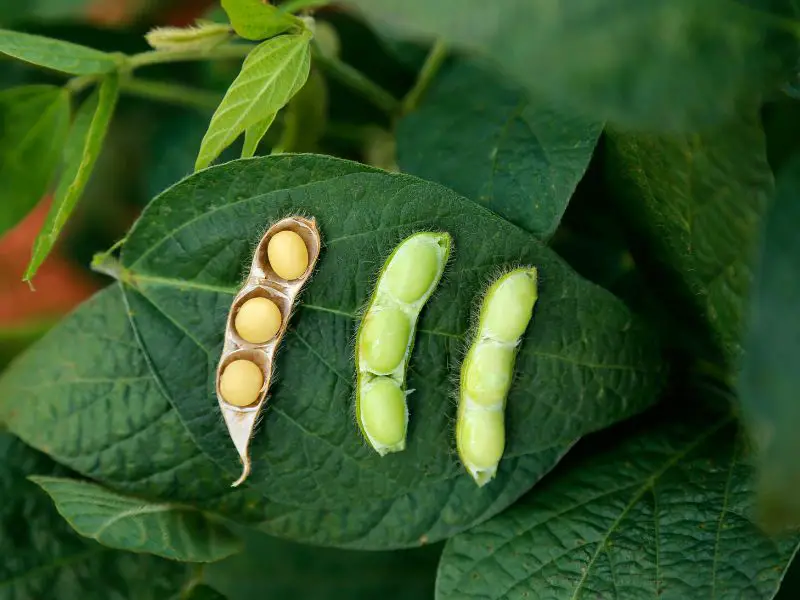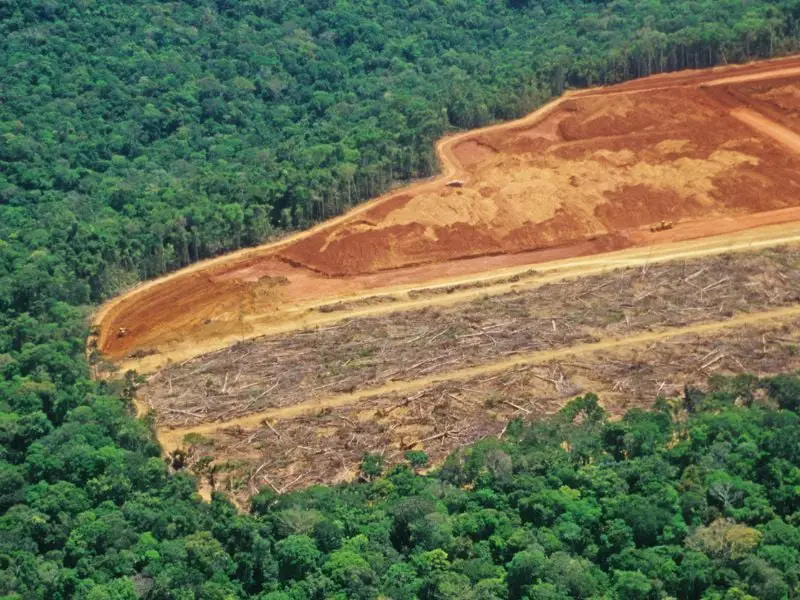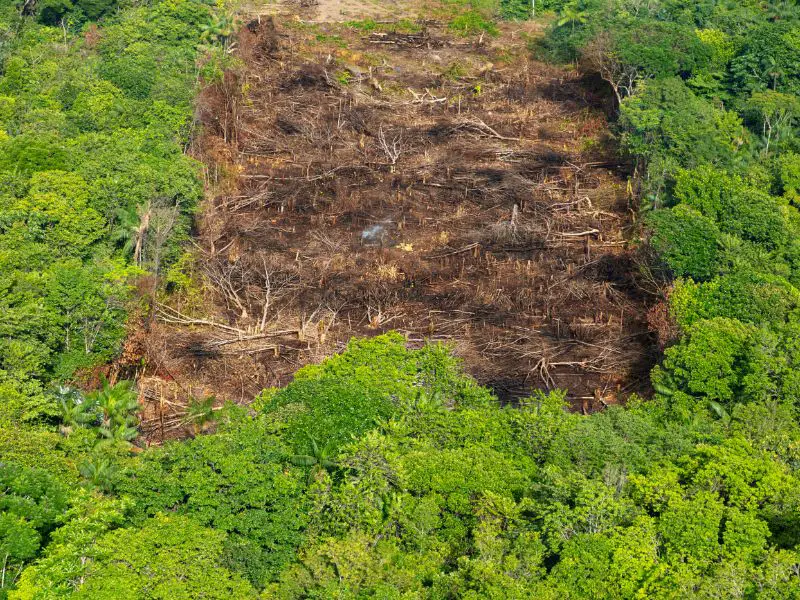The Amazon rainforest keeps making the headlines and not for good reasons. The largest rainforest of the planet is estimated to be fully destroyed during the next few decades if we continue its deforestation at the current pace.
There is nothing fundamentally harmful about growing various beans, including soybeans; they are an extremely efficient protein source. However, farming soybeans to fatten billions of farmed animals is unreasonable and unsustainable because it requires massive quantities of beans to be grown on scarce land.
In this article, we’ll dig into how soybean farming for cattle raising affects the world’s largest rainforest.

Expansion of Soybean in Amazon
Soybean production is spreading in the Amazon because of economic factors, such as high grain prices. Increasing demand for meat in nations with a large and rapidly expanding middle class (mainly India, Brazil, and China) and U.S. government subsidies for corn-based ethanol production are driving these high prices.
These subsidies (basically rewards for farmers for cultivating specific crops) have pushed American farmers to produce corn rather than soy. Less soy production in the United States causes increased production in countries such as Brazil, which has vast agriculturally viable regions.
Since 1990, the amount of land in Amazonian states used for growing soybeans has increased at a pace of 14.1% per year. Today, the total area used for growing soybeans exceeds eight million hectares.
Deforestation in Amazon
Soybean agriculture is one of the most significant contributors to deforestation in the Amazon basin. Brazil’s area planted with soybeans has more than doubled from around 15 million ha in 2000 to approximately 37 million ha in 2020. 80% of the soy farmed in the Amazon is used as animal feed. The remainder is used for the oil or human consumption.

Soybeans Are One of the Most Harmful Crops Globally
Soybeans are one of the most harmful crops globally, responsible for enormous areas of deforestation in the South American rainforest. Extensive portions of the Amazon rainforest and other ecosystems in South America have been turned into industrial soybean farms, while the supporting infrastructure has accelerated deforestation.
Soy expansion is expected to continue, with negative consequences for biodiversity in Amazonian agricultural frontiers. Brazil has a competitive edge because of low wages, weak worker protection, unregulated land usage, and widespread corruption, allowing it to continue producing feedstock at lower prices worldwide.
Soy development is aggressively supported in Brazil, primarily due to agribusiness interests, corruption, and government-funded infrastructure upgrades.

Deforestation in the Amazon is indirectly caused by large-scale soy production by building new and better roads. For example, soy farmers pushed for the BR-163 highway, which was built so that soy could be moved from the interior of Brazil to the market. It also lets illegal loggers, land thieves, and ranchers take advantage of opportunities in the heart of the Amazon.
Deforestation Made Brazil Top Soy Producer
As it confronts a record number of wildfires, the former Brazilian administration led by Jair Bolsonaro rejected a financial aid offer from the G7 nations. Many of these wildfires are being blamed on beef and soy as deforestation rises due to a greater need for grazing pasture and crop-growing areas.
As a result, cattle and soy production have increased at the price of the largest and most biodiverse rainforest on the planet. The country is now the world’s top beef exporter and the largest soy producer. Brazil produced over 14 million metric tons of soy in the early 1980s, and production increased due to the development of new planting techniques and the usage of pesticides.
What’s Next in the Fight to Stop Amazon Deforestation
Prohibitions have effectively stopped soy expansion in the Brazilian Amazon thanks to the new administration of Inacio Lula Da Silva. The renewal of the soy moratorium shows what collaborations between industry and society may accomplish in saving our world. These agreements can give market participants significant assurances that Brazilian soy is forest friendly.
However, while the moratorium is acknowledged to help reduce deforestation in the Brazilian Amazon, the fight to stop Amazon havoc is far from over.
The Amazon is still threatened by disastrous mega-dams, illegal logging and mining activities, and other commodities that drive deforestation, such as livestock. And to meet these difficulties, we will need everyone’s help every step of the way. After all, the global soy moratorium was only possible because the public demanded it.

Author’s Note
When we talk about “Amazon,” we are talking about an ecosystem that includes more than one-fifth of the planet’s remaining rainforests – the most biodiverse places on Earth – home to millions of species, including human beings. With your help, we can save this precious habitat from destruction by unsustainable farming practices. But we need everyone’s support more than ever.
Related: Sustainable Foods, 10 Worst Fruits for the Environment, Desertification


1 thought on “How Soybean Farming in the Amazon Is Causing Deforestation”